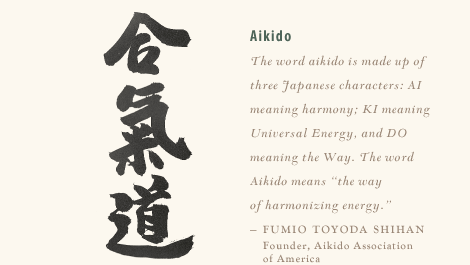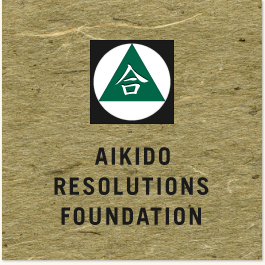Dojo Etiquette in Training
The following are rules of etiquette to be observed when practicing:
- Remove all jewelry before practice; it can be hazardous to yourself and others.
- Keep your toe- and fingernails trimmed properly.
- Observe strict rules of personal hygeine; keep your gi (uniform) clean at all times.
- If you are early for training, use that time to clean the dojo and to practice.
- Five minutes before the scheduled start of class, line up and sit quietly practicing internal training.
- When your sempai calls out "Shomen ni rei!" (bow to the front), bow. When your sempai calls out "Sensei ni rei!" (bow to the teacher), bow and say "Onegaishimasu!" (please be so kind [as to teach]).
- If you are late to class, change quickly, bow upon entering the practice area, and then sit quietly off to the side until your sensei gives you permission to join class.
- Bow to your sensei when called upon to assist in demonstrating a technique; bow again and sit down when done.
- Bow when the instructor has finished demonstrating and directs the class to pratice.
- When your sensei claps at any time during training, sit down in straight lines.
- Should your sensei advise you on a technique during practice, thank him or her and bow.
- Do not talk when your sensei is instructing or lecturing.
- If you need to leave the training area during class for any reason, bow and thank your partner, and then ask your instructor's permission to be excused.
- Bow to your partner when beginning or ending practice with that person.
- At the end of class, your sempai will again call out "Shomen ni rei!" and "Sensei ni rei!". As you bow to your sensei, say "Arigato gozaimashita" (thank you very much). Your sempai will then call out "Hotagai ni rei!" (bow to your fellow students). At this point, you should bow to everyone with whom you practiced during that class.
- When practicing, tap loudly with your hand should you feel excessive pain; this is a signal for your partner to stop, and is faster than saying "ouch" or "stop".
- Never practice any technique you have not been taught.
- Observe rules of safety at all times.
- Report any injuries to your sensei immediately.
- Do not teach Aikido techniques to non-students without permission. This is to prevent misuse and injury.
[ Top ]
Rules During Practice
Composed by the O’Sensei
- One blow in Aikido is capable of killing an opponent. In practice, obey your instructor, and do not make the practice period a time for needless testing of strength.
- Aikido is an art in which one person learns to face many opponents simultaneously. It therefore requires that you polish and perfect your execution of each movement so that you can take on not only the one directly before you but also those approaching from every direction.
- Practice at all times with a feeling of pleasurable exhilaration.
- The teachings of your instructor constitute only a small fraction of what you will learn. Your mastery of each movement will depend almost completely on individual, earnest practice.
- Daily practice begins with light movements of the body, gradually increasing in intensity and strength; but there must be no over-exertion. That is why even an elderly person may continue to practice with pleasure without bodily harm, and will attain the goal of his training.
- The purpose of Aikido is to train both body and mind and to make a person sincere. All Aikido arts are secret in nature and are not to be revealed publicly, nor taught to rogues who will use them for evil purposes.�
[ Top ]
|




